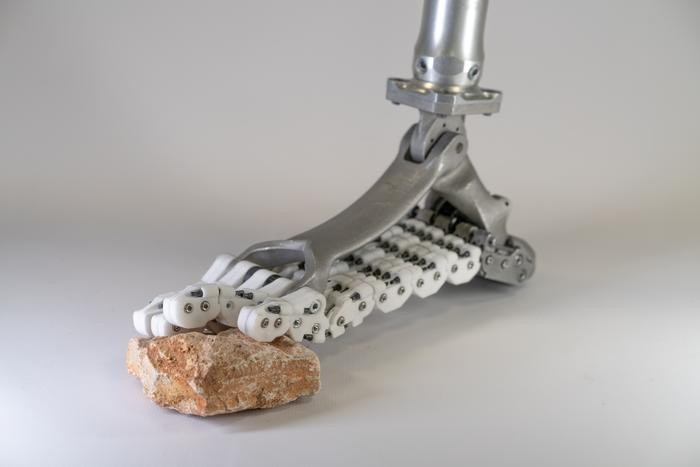The Italian Institute of Technology (IIT) has unveiled SoftFoot Pro, an innovative motorless prosthetic foot designed to offer flexibility and adaptability for individuals with limb loss.
Developed by IIT in Genoa, SoftFoot Pro aims to enhance mobility and stability across varied terrains, including challenging surfaces such as slippery ground.

SoftFoot Pro: Inspired by Human Anatomy
SoftFoot Pro features a unique design inspired by human anatomy, distinguishing it internationally as both a technological prosthesis and a potential component for future humanoid robots. It incorporates patented technological solutions that enhance its functionality, with ongoing evaluation for additional patents by the European Patent Office.
Recently showcased at the G7 Health track's Technical Event in Genoa, organized by the Italian Ministry of Health in collaboration with IIT, SoftFoot Pro was highlighted among other health technologies. This public debut underscored its potential contributions to the fields of health innovation and active aging.
Manuel G. Catalano, a researcher at IIT's Soft Robotics for Human Cooperation and Rehabilitation Lab, outlined the design philosophy behind SoftFoot Pro. Catalano emphasized the foot's ability to mimic natural human movements and adapt to various environmental challenges.
SoftFoot Pro weighs around 450 grams and can support up to 100 kilograms, utilizing a mobile arch mechanism made from titanium or aeronautical-grade aluminum alloy.
Its architecture includes five high-strength plastic chains designed to simulate the human foot's plantar fascia, enhancing stability and ensuring even weight distribution during movement. These chains are interconnected with elastic components, replicating the anatomical structure of the foot's tarsus, metatarsus, and phalanges.
Central to SoftFoot Pro's design is its adaptive capability, facilitated by an innovative windlass mechanism that stiffens the sole's plantar fascia during walking. This feature enhances propulsion efficiency and energy conservation, critical for users navigating various terrains and performing everyday tasks with ease, according to the research team.
Read Also : Fudan University Unveils Revolutionary Emotional Humanoid Robot 'Guanghua No. 1' at AI Conference
SoftFoot Pro's Flexibility and Waterproof Construction
Unlike conventional prosthetic options currently available, SoftFoot Pro's flexibility allows it to deform and adjust to terrain irregularities, thereby minimizing discomfort and improving stability. This adaptability extends to activities such as ascending stairs or walking on uneven surfaces, enhancing user experience without necessitating multiple prosthetic devices tailored for specific environments.
Moreover, SoftFoot Pro's waterproof construction enhances its suitability for outdoor activities, including meadows, beaches, and slippery terrains. This feature eliminates the need for users to switch prostheses based on activity, promoting seamless integration into daily life and recreational pursuits, according to the team.
International collaborations with institutions like Hannover Medical School and the Medical University of Vienna have facilitated rigorous testing of SoftFoot Pro prototypes among individuals with unilateral lower limb amputations.
These trials aim to validate its performance and durability in real-world scenarios, informing ongoing advancements and refinements in prosthetic technology.
Related Article : Mitsubishi's TOKUFASTbot Sets New Record in Solving the Rubik's Cube in Less Than Half a Second

ⓒ 2025 TECHTIMES.com All rights reserved. Do not reproduce without permission.




